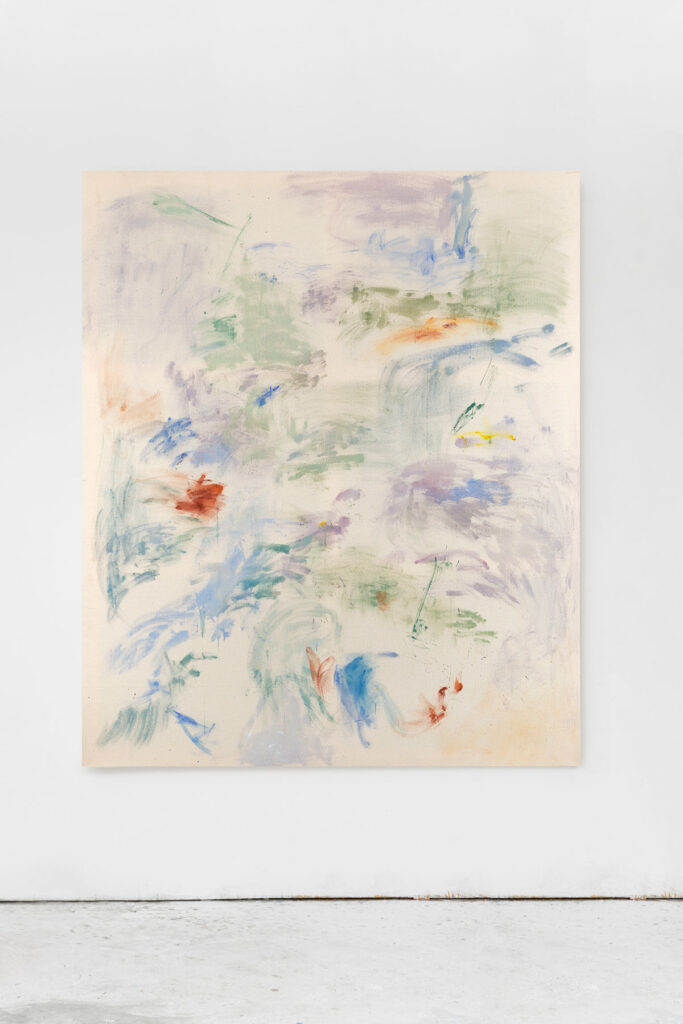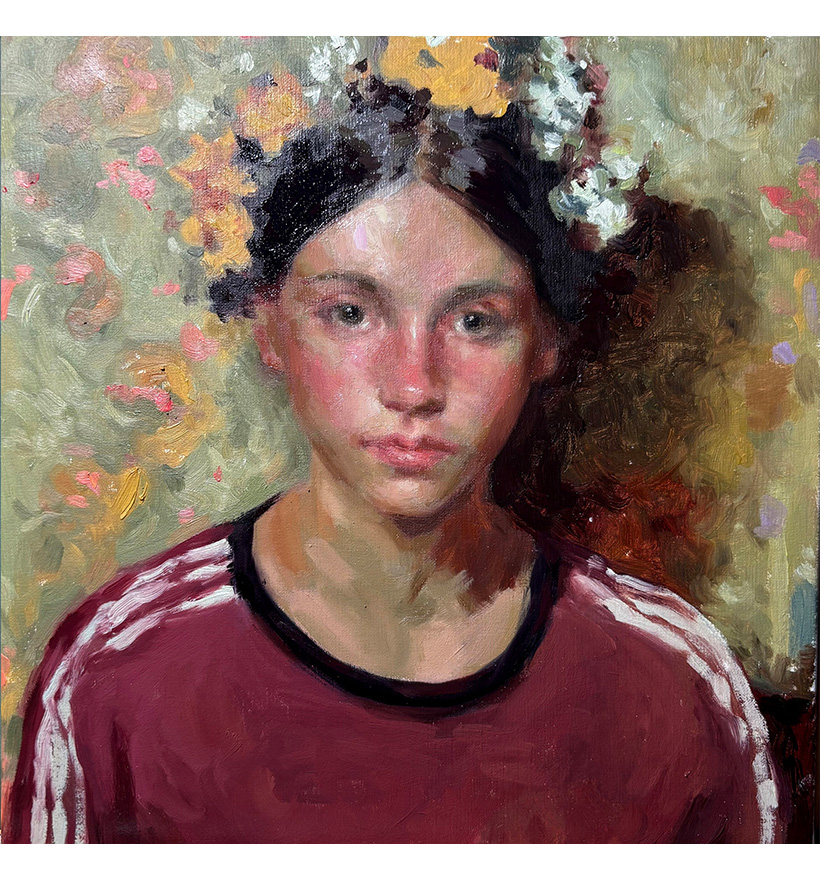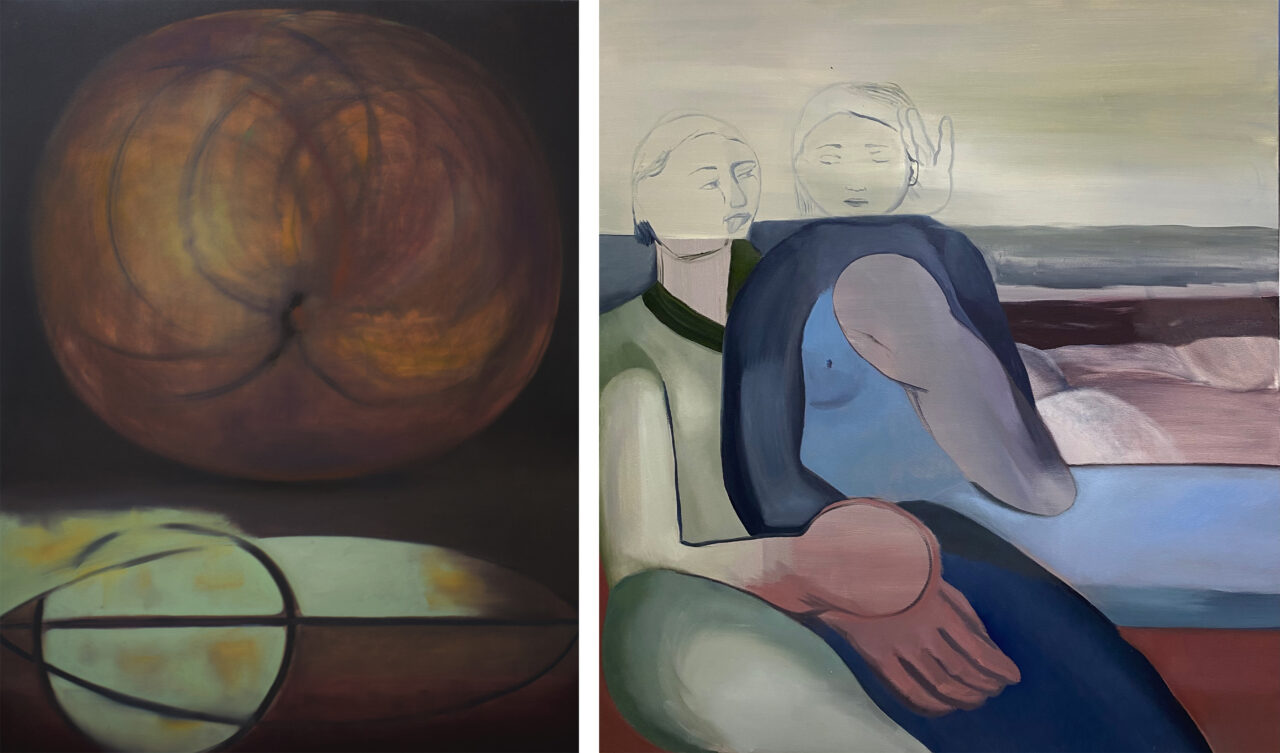¿No deberían sonar igual todos los silencios?. Ana Monsó
We live in a time where noise seems to have become the pulse of society. Technological, ideological, and emotional noise permeates almost every aspect of our experience. Amid digital notifications, standardized discourses, and the constant production of images, silence seems like a luxury or an anomaly. It is in this context of excess that Ana Monsó’s work emerges as an act of necessity: a persistent search for silence as a portal to other encounters.
For the artist, silence is not the absence of sound, but the presence of something deeper, a territory of listening where thought pauses and perception expands. From this essential pause, painting reveals itself as an emotional language of refuge, an art born of silence for silence.
Monsó approaches her work abandoning any attempt at representation or ideological discourse. Her pictorial gesture is an act of liberation. Each mark, each color, emanates without a past, without any pretense of saying or proving anything. There is no theory or message that conditions the work; There is, instead, a surrender to the moment, to the present that becomes visible on the canvas.
Her works—large-format, immersive, open—do not seek to fill, but to empty. In them, what is unpainted acquires the same value as what appears. The artist works from absence: what is missing, what withdraws, what remains silent. Painting thus becomes a space where silence materializes, where color speaks of what noise cannot say.
The titles of the pieces—”Silencio” (“Silence”), “Todo aquello que rodea el silencio” (“All That Surrounds Silence”), Ritmo del silencio (“Rhythm of Silence”) , Después del silencio (“After Silence”), Ligereza del silencio (“Lightness of Silence”), “Narrando el pasado” (“Narrating the Past”) —form an intimate vocabulary of stillness. Each suggests a variation of the same idea: silence as rhythm, as weightlessness, as the subtle narrative of an invisible symphony.
On each canvas, the colors and stains coexist in balance, without hierarchies or conflicts. There are no corrections or superimpositions: everything integrates naturally, as if each stroke had already found its place. Nothing is missing, nothing is superfluous. Guided by a logic of inner harmony, Ana Monsó imbues her work with a serene beauty, one of ethical and emotional resonance. In this process, the artist seeks, constructs, and offers the viewer a form of reconciliation, a space where noise ceases and listening emerges.
The silence Monsó proposes is not devoid of meaning. It is an open door. Perhaps a social door, if we understand that dialogue becomes possible only when noise diminishes. Perhaps a transcendent door, if this silence leads us to an encounter with our deepest selves. Or perhaps a door to the sacred, if we discover in stillness a new form of the divine: a sacralization of the everyday, of that minimal matter that ceases to be noise and transforms into music.
In this sense, Ana Monsó’s works are more than paintings: they are thresholds. Spaces where the viewer is invited to enter and remain, to be silent and observe, to perceive the vibration of that which is silent. Thus, silence is not merely a theme: it is initiation, method, atmosphere, and destiny. Because perhaps, as the artist suggests, not all silences sound the same. But all authentic silences, those she cultivates in her painting, return us to the place where noise dissolves and the self begins, at last, to listen to itself.





